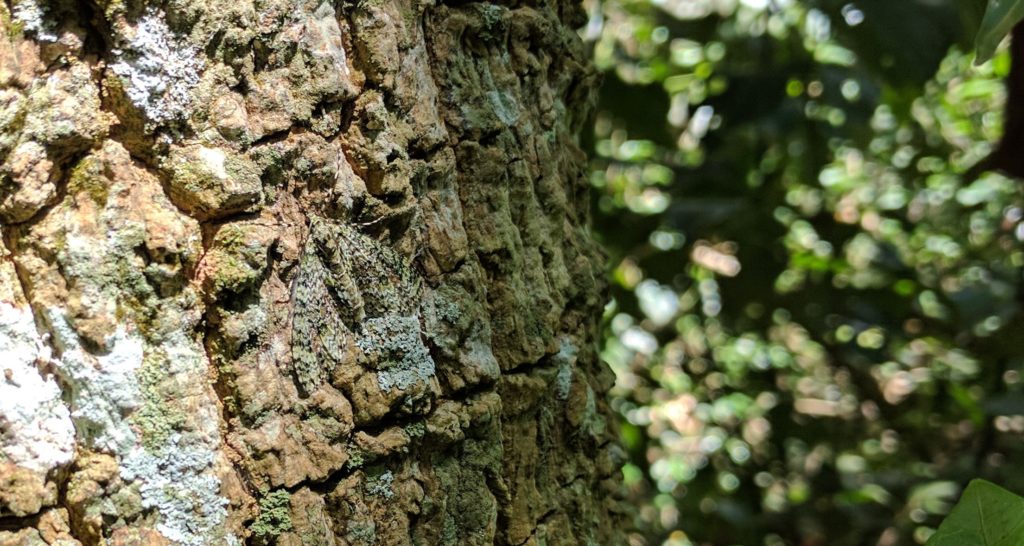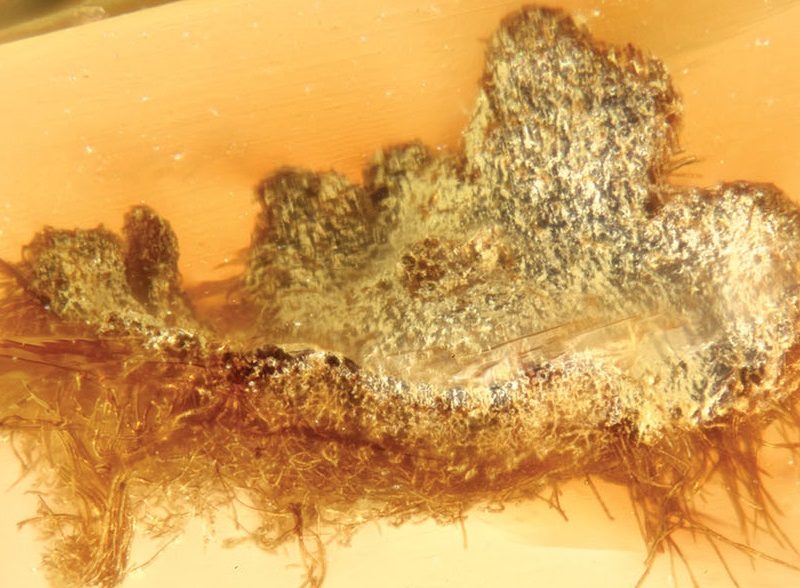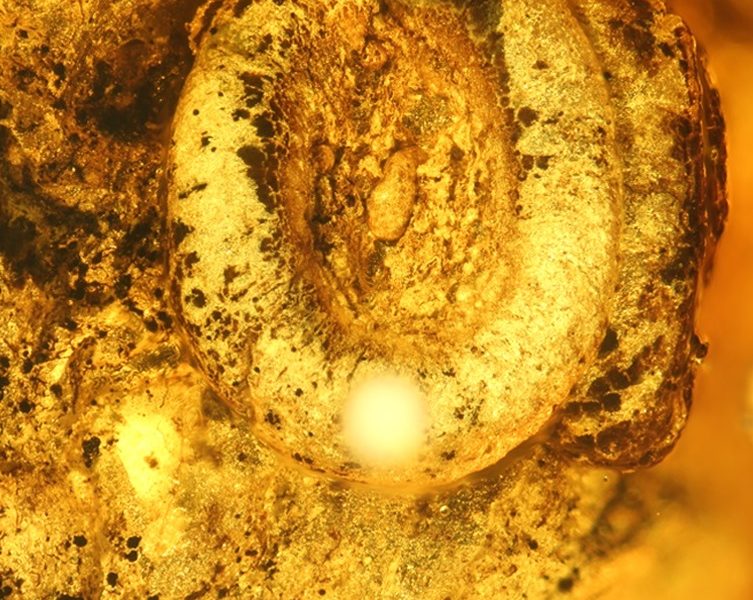In many modern ecosystems, lichens contribute significantly to primary production and nitrogen fixation, inhibit erosion, and efficiently capture and retain moisture. Additionally, they provide food and shelter for various insects and other animals, and at least mites (Acari), beetles (Coleoptera), butterflies and moths (Lepidoptera), termites (Isoptera), barklice (Psocoptera), thrisps (Thysanoptera), earwigs (Dermaptera), stoneflies (Plecoptera), and snails and slugs (Gastropoda) are known to feed on lichens. Amber inclusions of a foliose lichen with feeding marks and fecal pellets show that such animal-lichen interactions also played a role in the Paleogene forest ecosystems. Based on observations from extant lichen feeders, the fossil feeding marks and fecal pellets were most probably produced by gastropods and mites. The fossil lichen resembles some extant members of the family Physciaceae.
Schmidt AR, Steuernagel L, Behling H, Seyfullah LJ, Beimforde C, Sadowski E, Rikkinen J, Kaasalainen U. 2022. Fossil evidence of lichen grazing from Palaeogene amber. Review of Palaeobotany and Palynology 302: 104664, doi.org/10.1016/j.revpalbo.2022.104664.

Keywords: Bitterfeld amber, palaeoecology

